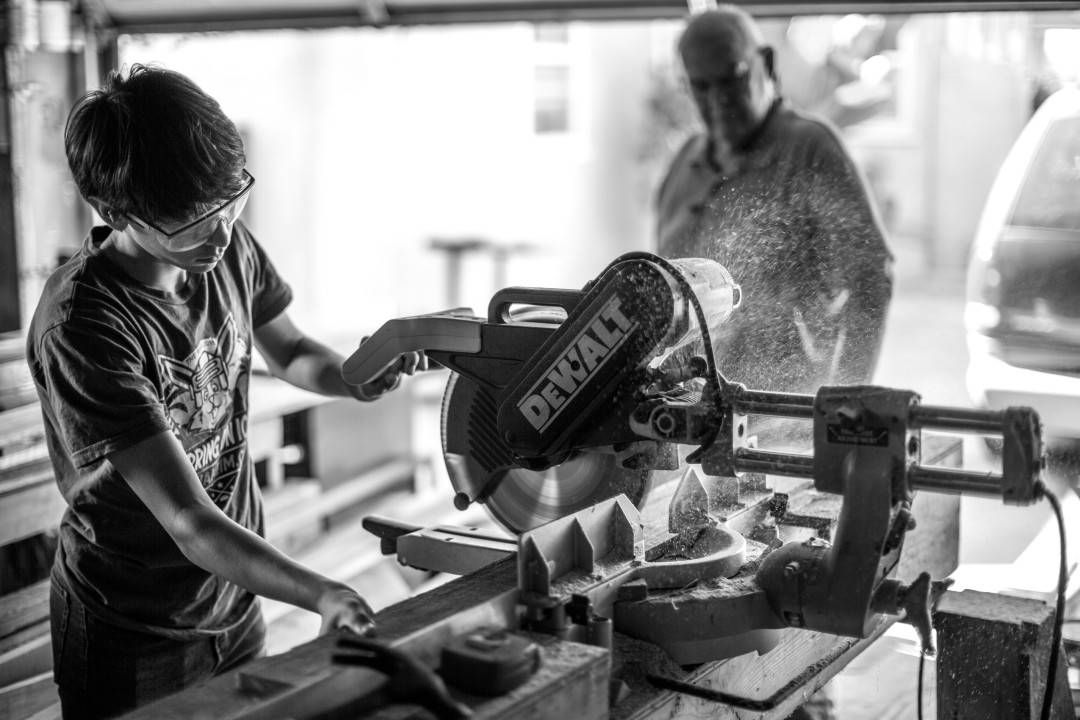How can we be more ‘unhurriedly productive?’
That’s a question I’ve been exploring for a couple of years now. Here’s why I think it’s so important:
- Burnout levels are high, and on the rise. Here in New Zealand, workers work longer hours and for less reward than workers in most other OECD countries. We work harder rather than smarter.
- We’re running our lives, our organisations and our planet as though nothing has changed. But of course, so much has, and continues to do so. We work in ways that don’t serve our emerging context.
- We all want to do good work, but it seems our default mode is always ‘on’. We don’t know any different. We work as if that’s the point.
I reckon this issue is so important that I’ve decided that it’s going to be the subject of my next book.
States of Productivity
Over the past couple of years, I’ve noticed four ‘states’ that people, teams and organisations can be in in terms of unhurried productivity. They all have their place. And I reckon there’s one state to rule them all.
Let’s build a model to help us make sense of what I’m talking about:
Imagine a continuum from Hurried to Unhurried. ‘Hurried’ is when you’re in a mentally rushed state. At its worst, you’d call it frantic. ‘Unhurried’ is the opposite. Your mind is calm. You’re in no real rush. You’re just getting on with it.


Now imagine another continuum, from Productive to Unproductive. ‘Productive’ is just that. You’re getting things done. Creating output and getting results. ‘Unproductive’ is that place where, on the surface at least, nothing much is happening. There’s no obvious output or result. To the casual observer, you’re not doing much at all.
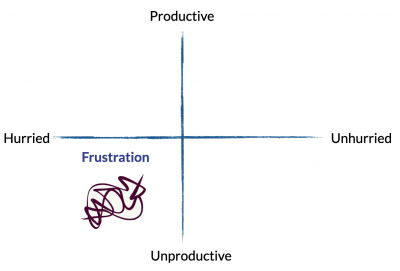
OK. Cool. What do you call that state in the bottom left box? You’re frantically busy but you’re not producing anything. Like a fly trapped in a jar. Aaagh! Let’s call that the Frustration box.
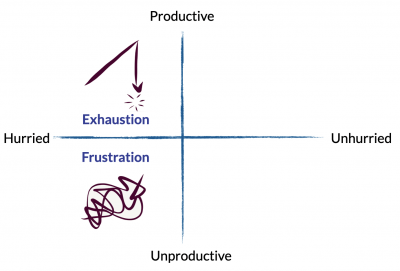
What about the top left box? You’re flat out making stuff happen. It’s exciting for a while, until it’s not. Too much of a good thing leads to Exhaustion.
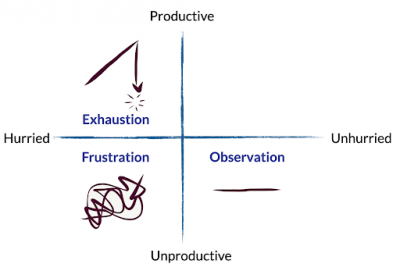
Down in the bottom right box is where you unhook from the need for action. It doesn’t necessarily mean ‘escaping’ (e.g. to some tropical island). It just means unplugging, being present, and observing what’s happening. I call this the Observation box.
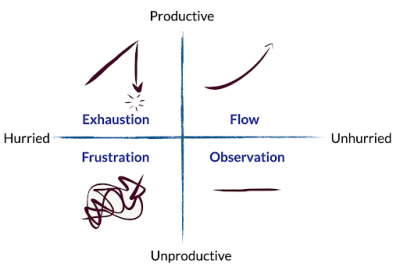
Finally, our top right box is where we’re paradoxically unhooked from hurriedness, yet we’re still producing great stuff. We’re in the zone. Many people I ask call this ‘nirvana’. I’m calling it the Flow box.
The flow state is associated with high levels of productivity, performance, engagement, satisfaction and pretty much any other corporate metric you’d care to mention. One 10-year study found people in flow states were up to 500% more productive. It’s something worth paying attention to!
Make a Choice
Where do you spend most of your time? What’s that like for you?
What about your people? Where do they spend most of their time? If you’re not sure, draw them this model and ask them. Then ask them where they’d like to be. See what you notice.

What I see in most peoples’ lives, and in most organisations, is an infinite loop from Exhaustion to Observation. People go hard and fast. Then they take a break and escape for a while. Then they rinse and repeat. I struggle with this as much as the next person.
In our western culture, we value making stuff happen far more than
we value seeing what’s happening.
We value speed over deliberateness. Taking a break is framed as a temporary time out (e.g. going on leave), and ‘full on’ is accepted as the normal state of operating. Spending too much time in the ‘Observation box’ is frowned upon.
This is not a sustainable story, people.
What would it take to experience a life, or an organisational culture, which includes a large amount of time in the Flow box? Add a bit of time nudging into the Exhaustion box (you know, that ‘good tired’ feeling?), and an appropriate amount of time in the Observation box. Perhaps even a little bit of Frustration could be useful. The creative process, for example, often needs a little Frustration to ignite the Flow.
Over the past 18 months, more than a few people have woken up and asked themselves “what do I actually want my life to be about?” And they’ve realised they want a different way of working and living. One that’s more balanced, less stressed and more meaningful. But they’re caught in a system and a culture that makes the infinity loop their reality. How can that be a good thing?
As we navigate a changing world, we need to break the infinity loop. We need to find sustainable ways of being in flow, both for us as individuals, and for our teams and organisations.
Otherwise? Well. You know it as well as I do. There’s a cliff looming just ahead.
Like this post? When you’re ready, here are three ways I can help you further:
- Sign up to my ‘Thinking from the Edge’ newsletter to get tips, insights and early release information that I don’t share on the usual social channels. Delivered weekly to your inbox.
- Get my book, Change Makers: How to make your mark with more impact and less drama. It’s available here.
- Check out Change Makers Co-Lab – an online course + community to help you make your mark with more impact and less drama.


